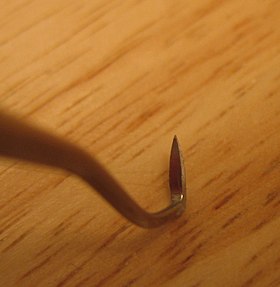Plaque and its effects
- Plaque is a soft yellow-grayish substance that adheres to tooth surfaces.
- It is an organized biofilm primarily composed of bacteria in a matrix of glycoproteins and extracellular polysaccharides.
- Plaque cannot be removed by rinsing or using sprays.
- Regular brushing and flossing can disturb and eliminate plaque from the oral cavity.
- If plaque remains undisturbed, it absorbs minerals from saliva and transforms into calculus (tartar), which cannot be removed by brushing or flossing.
- Plaque accumulation along the gumline leads to gum infection known as gingivitis.
- Gingivitis causes swelling, redness, and bleeding gums.
- In gingivitis, the space between the tooth and gum (sulcus) allows new plaque to migrate and form periodontal pockets.
- Bacterial plaque in the pockets transforms into calculus, resulting in ulceration and breakdown of gum attachment.
- As the pocket depth increases, gram negative bacteria replace gram positive bacteria, leading to periodontitis and bone loss.
Periodontal disease progression
- Radiographs show blunted, slanted, or scooped out appearance of crestal bone in periodontal disease.
- Chronic inflammation stimulates osteoclasts, causing them to break down bone faster than osteoblasts can build it.
- This imbalance leads to bone loss and attachment tissue loss.
- Periodontal disease damage persists until plaque and calculus are removed.
- Brushing and flossing are ineffective in cleaning pockets deeper than 3mm and removing calculus.
Scaling and root planing procedure
- Scaling and root planing is a non-surgical periodontal therapy or deep cleaning procedure.
- It involves removal of dental plaque and calculus (scaling) and smoothing of root surfaces (planing).
- Periodontal scalers and curettes are used in the procedure.
- Scaling and root planing helps establish a periodontium in remission of periodontal disease.
- It is recommended when brushing and flossing are no longer sufficient to remove causative factors of periodontal disease.
Healing and long-term effects
- After scaling and root planing, the tissue can begin to heal and inflammation decreases.
- The gums form an effective seal between the tooth root and the outside environment.
- However, bone loss due to periodontal disease is irreversible.
- Extensive bone loss can result in permanent recession of the gums.
- The damage caused by periodontal disease may have permanent effects on gum tissue.
Additional considerations and techniques
- Treatment of periodontitis involves removing local causative factors to create a biologically compatible environment between the tooth and surrounding tissues.
- The use of dental lasers after scaling and root planing may promote tissue healing.
- Prophylactic scaling and polishing can be done to prevent oral diseases.
- Oral irrigation with chlorhexidine gluconate and site-specific antibiotics can aid in disinfecting periodontal tissues and facilitating healing.
- Full mouth treatment using ultrasonic debridement may reduce treatment time and the need for anesthesia.
- Evidence-based dentistry reviews provide mixed results on the effectiveness of scaling and root planing.
- Maintenance and follow-up visits are crucial for sustaining periodontal health after scaling and root planing.
Scaling and root planing, also known as conventional periodontal therapy, non-surgical periodontal therapy or deep cleaning, is a procedure involving removal of dental plaque and calculus (scaling or debridement) and then smoothing, or planing, of the (exposed) surfaces of the roots, removing cementum or dentine that is impregnated with calculus, toxins, or microorganisms, the agents that cause inflammation. It is a part of non-surgical periodontal therapy. This helps to establish a periodontium that is in remission of periodontal disease. Periodontal scalers and periodontal curettes are some of the tools involved.
A regular, non-deep teeth cleaning includes tooth scaling, tooth polishing, and debridement if too much tartar has accumulated, but does not include root planing.

